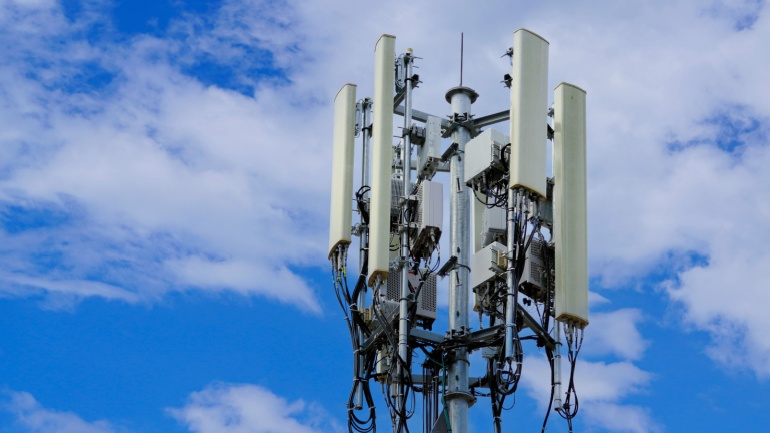Viettel has launched Vietnam’s first commercial O-RAN 5G network, powered by Qualcomm’s advanced 5G platforms. The rollout, featuring over 300 sites by 2025, includes cutting-edge infrastructure like the Qualcomm X100 and QRU100 platforms.
NEC Corporation has obtained O-RAN Certification from Japan OTIC (Open Testing & Integration Centres) for its MB5450 5G base station radio unit (RU), certifying that the RU conforms with the O-RAN Fronthaul Interface Specifications established by the Open Radio Access Network Alliance (O-RAN ALLIANCE). This RU has been delivered to Rakuten Symphony and is being deployed globally.
Verizon’s deployment of an Open RAN Distributed Antenna System (DAS) at the University of Texas and Austin Convention Center showcases an innovative leap in telecommunications. Open RAN is pivotal for flexible and efficient network services by utilizing components from multiple vendors.
Samsung Electronics today announced that the company has been selected by KDDI as a main vendor to provide 4G and 5G O-RAN compliant virtualized Radio Access Network (vRAN) solutions for their Open RAN deployment in Japan. In line with KDDI’s vision to adopt leading-edge network technology, the companies will expand the reach of Open RAN in the coming years. Starting from 2025, KDDI will expand its Open RAN deployment leveraging the advantages of a fully disaggregated and software-based architecture powered by Samsung vRAN. KDDI’s Open RAN network will feature enhanced capabilities for improved energy efficiency, optimized performance and intelligent automation. “KDDI has been focused on identifying and preparing for next-generation networks, and we have been conducting numerous technical verification and feasibility studies on Open RAN with industry-leading companies like Samsung,” said Kazuyuki Yoshimura, Chief Technology Officer of KDDI. “Today’s announcement represents KDDI’s dedication to bringing innovative technologies to Japan. We are proud to deliver a cutting-edge and reliable radio access…
Viavi Solutions has launched the Viavi Automated Lab-as-a-Service (VALOR) in Arizona, enhancing the landscape of Open Radio Access Network (Open RAN) testing services. With support from the NTIA’s Public Wireless Supply Chain Innovation Fund, VALOR focuses on interoperability, performance, and security.
NTT Docomo is set to launch New Radio dual connectivity technology, offering download speeds up to 6.6 Gbps using 5G Standalone architecture. Utilizing sub-6GHz bands and mmWave, this VoIP-enhancing tech will debut in Tokyo and Kanagawa starting August 1.
Nokia and Vodafone have completed a successful end-to-end Open RAN trial on Vodafone Italy’s live 5G standalone network. This trial utilized Nokia’s AirScale Massive MIMO radios and baseband software on Dell PowerEdge XR8000 servers and Red Hat OpenShift, a hybrid cloud platform powered by Kubernetes, connected to Nokia’s standalone 5G core. Additionally, Nokia’s MantaRay Networks Management system was used to enhance network monitoring and management. This trial showcases the maturity of Nokia’s anyRAN approach, providing mobile operators and enterprises with greater network-building flexibility. Nokia’s support for Open Fronthaul features, integrated with its high-performance RAN software, ensures performance consistency with existing RAN. Nokia has collaborated with five open radio unit suppliers, demonstrating the openness and high performance of its AirScale O-RAN DU/CU. This solution offers operators enhanced flexibility, efficiency, and scalability. By integrating with Red Hat OpenShift, service providers can scale their 5G networks and introduce new services quickly. Vodafone aims…
Infovista has unveiled the latest version of its AI-driven RF planning tool, Infovista Planet, which now supports 5G RedCap network planning. This advancement allows operators’ network planning teams to incorporate 3GPP-compliant 5G RedCap devices in their analyses and simulations of 5G Standalone networks. Currently, 17 out of 126 mobile operators investing in 5G Standalone are exploring 5G RedCap for emerging applications, according to the GSA.
On May 15, the US House of Representatives voted overwhelmingly to reauthorize the National Telecommunications and Information Administration (NTIA) for the first time since 1992. The legislation, passed with a vote of 374-36, aims to update the mission and functions of the NTIA in response to significant changes in the telecommunications landscape.
Viavi Solutions Inc. has made waves at the 2024 RIC Forum, held in Dallas, Texas. The company proudly showcased its TeraVM RIC Test and TM500 Network Tester in various demonstrations, further solidifying its commitment to cutting-edge collaborations within the telecom industry.













